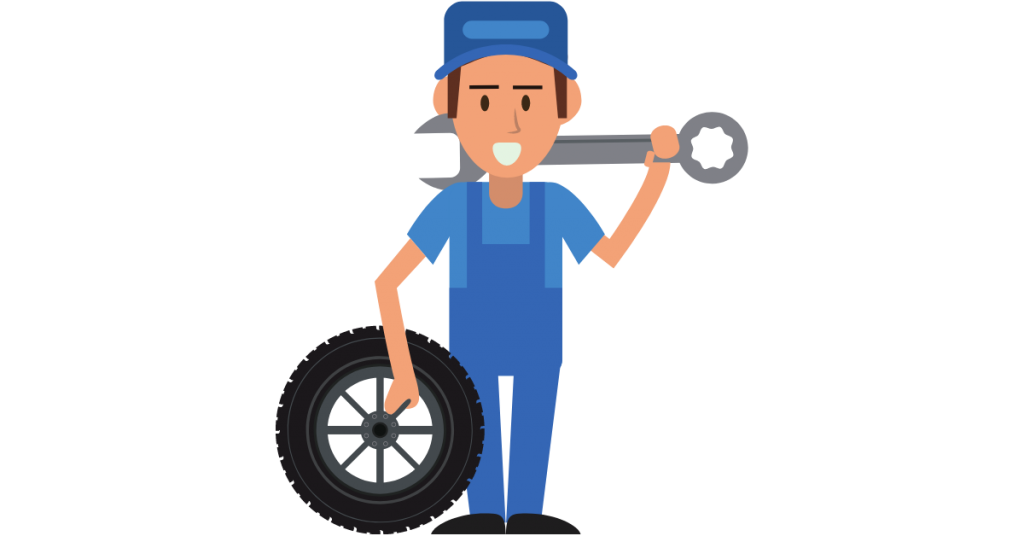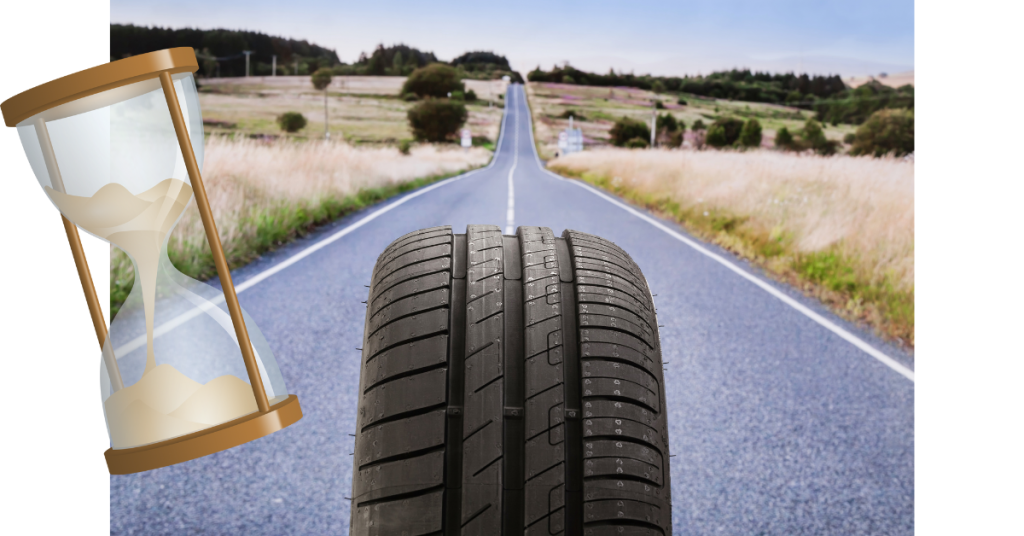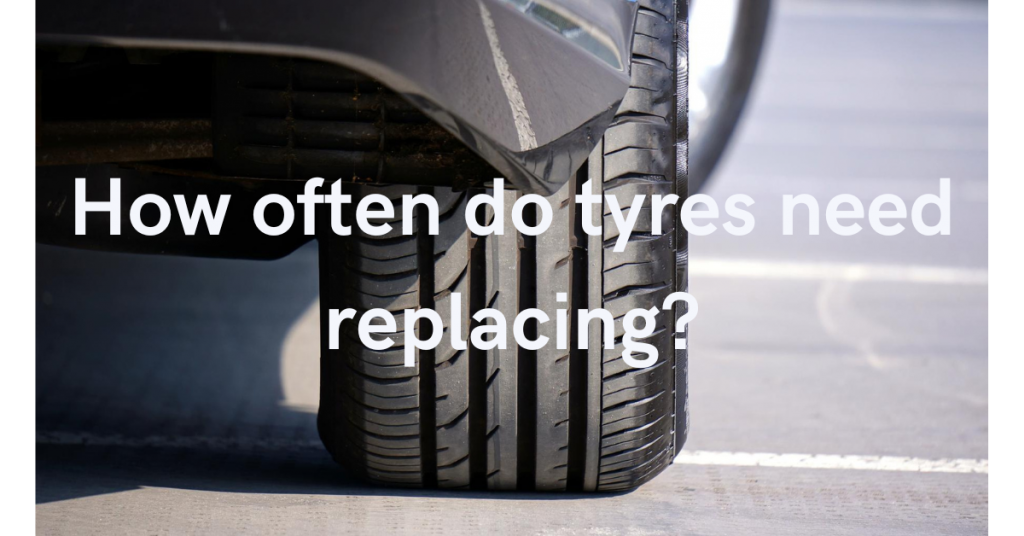How often does one think about a vehicle’s tires and the state they are in? They are the only thing touching the road and keeping you safely on the road. Maintaining them should be a priority and still the state of tires are a major overlooked feature of car maintenance. Largely it depends on the driver on “How often should tires be replaced”. We will be discussing ways to increase a tire’s longevity.
There is also the legal factor, and by law you need to keep your tires road worthy for your own safety, and the safety of other drivers on the road. So do yourself a favour and check your tires before doing a MOT test (UK roadworthy test), it will save you a lot of hassle and time.
3 Tire care tips

Legal Tire limits, Tread depth (cars, UK)
By law you need to have a tread depth of at least 1.6mm on all your tires to pass a MOT (in the UK). The tread is the groovy part on the outside of your tire. If the tread dept are less then 1.6mm the tire should be replaced. So if you are not sure, go see a professional to check it for you.
Tire age (cars)
Even if your vehicle is more in the garage than on the road you should still check those tires. Age also deteriorates them, especially when they are kept outside and get exposed to weather elements like sun, snow and ice. These elements will weaken the integrity of the tires, and older tires could develop cracks in the sidewall of the tire which eventually leads to a blowout while you are driving.
Tire pressure
Also an important aspect of tire maintenance. Tires lose air over time or could have gotten a slow puncture on the road. Deflated tires will underperform and drive sluggish, then again over inflated tires will drive hard and bumpy making them less safe on the road.
These are the most important factors of keeping your tires roadworthy and safe for driving.
What affects a tires lifespan?

- Wheel alignment; It’s important to test your wheel alignment. A major factor here is uneven wear of tires and the tread of the tire will wear off to one side more quickly. Worn shocks can also cause uneven wear of tires.
- Tire pressure; under inflated tires will wear off more quickly on the outside edge of the tire and over inflated tires will wear off more in the middle. Correct pressure will help tires to wear off evenly.
- Vehicle storage; vehicle parked outside and exposed to weather elements will cause tires to degrade faster as opposed to a vehicle stored in a garage.
- Front or rear wheel drive; if the car is front wheel drive the front tires will lose tread more quickly, and with a rear wheel drive the rear tires will wear of faster.
- Aggressive driving, which includes quick acceleration, fast cornering and quick breaks, driving fast which can overheat the tires, driving through potholes and over bumps.
- Heavy loads; vehicles carrying heavy loads will wear their tires faster, even heavier vehicles itself will wear off tires faster than lighter ones.
- Tire size matters; using tires with different sizes or where the rim and the tire is not compatible will be unsafe to drive and tires will wear down more quickly. In extreme cold areas where ice and snow are present, neglecting to replace summer tires during winter times will cause tires to degrade faster.
The problem with standing vehicles

If you have a vehicle that you seldom drive and just stand most of the time, tire wear from driving on the road will be minimal. That does not mean that your tires do not degrade over time. Storage conditions also play a major role in the tires longevity. Stored vehicles should be stored inside where it is not exposed to all the weather elements.
Even if the tires tread is still good, tires older than 5 years should be inspected especially for cracks or bumps on the outside wall of the tire. If the tire has been flat for quite a while, just re-inflating it would be risky. The weight of the car would have damaged the tire especially the sidewalls, where cracks could appear and cause a blowout.
How long tires should last?
10 Years is the maximum age for a tire, even if the tread is still good.If you have tires older than 10 years you should replace them as quickly as possible.
How to check Tyre age – UK
Look on the tires sidewall for the letters DOT. This stands for Department of Transport and holds the important information where and when the tire was manufactured. Look at the last 4 numbers in the DOT code, the first 2 would be the week of manufacture and the last 2 the year.
If the tire was manufactured pre 2000, it would have 3 digits where the first two would be the week and the last one the year. No 3 digit tires should be on the road anymore.
Why is tire pressure important?
Correct tire pressure contributes to your driving experience and handling of your vehicle, increasing the lifespan of your tires and keeping you safe on the road. The recommended tire pressure will also be most economical and give you more gas mileage. Check them regularly.
How do I know what my tire pressure should be?
Fastest way, check on the driver side the inside pillar of the door, there would be 2 sets of values. One where there is no luggage and the other with a fully loaded vehicle. The other way is to check your vehicle’s manual. Remember the pressure differs between the front tires and the back tires. They would say if the pressure is in ‘Psi’ or’ bar’. For example a front tire could be 2.2 bar or 32 Psi.
How often should I check my tire pressure?
Check your car tire pressure every 4 weeks – it is normal for tires to lose some air pressure over time. Checking your tire pressure every 4 weeks helps with the maintenance of your tires. Under inflated tires can also pose a danger as it affects steering and could eventually cause a tire blowout.
How long do run flat tires last after a puncture?
The name might be misleading; sure you can keep on driving when your run flats got a puncture, but you better be driving to the nearest garage where you can replace them. After puncturing your run flats, slow down to between 30 and 50mph to be safe and they are only good for about 50 miles.They have reinforced sidewalls so you can keep driving to safety and don’t need to stop next to the road to fix.
Keep in mind when you decide to buy run flat tires, once the tire is punctured it can not be fixed and should be replaced.
Uneven wear on tires

It is important to check for tire wear, and this is also depending on whether your vehicle is front wheel drive or rear wheel drive. The driving wheels will lose tread more quickly, for example a rear wheel drive car will experience more wear on the back tires. It is good practice to rotate your wheels with every car service to make sure your best tires are at the back.
Front wheel cars’ front wheels wear out faster and should be replaced when tread is getting low, fit the new tires at the back and put the back tires in front. Stability of your vehicle depends more on the back tires and helps with oversteering.
Conclusion

How often should tires be replaced? Well there is no straight forward answer to this question and a lot depends on you. Tyre maintenance is a much overlooked feature of vehicle maintenance and should not be taken lightly as it is the only thing keeping you safely on the road. Regular inspection of tires will ensure that your tires stay in good working condition and will extend your tire’s life.
Keep in mind that although the minimum tread depth by law is 1.6mm, driving it all the way to the minimum is never a good idea. You will have less traction and emergency break distance would increase the lower your tread gets. Tires with minimum tread will be subject to aquaplaning (driving on wet roads). Water forms a wedge between the tire and road and tires with less traction will lose control easier.
Tyre pressure should be checked weekly to ensure they are at the recommended pressure. These guidelines are recommended by the car/tire manufacturers for optimal handling, fuel consumption and tire longevity.




Comments are closed.